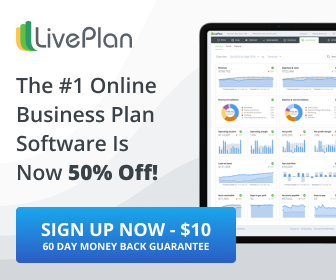- Business forecasting helps you identify who will buy your products and services, and what demand you can expect
- Accurate forecasting helps you find the right markets and avoid wasting money
- Defining the overall market size, deciding which segments you want to target, defining characteristics of targeted market segments, and more
By Denis Jakuc
Business forecasting is the process of identifying who will be buying your products and/or services (your market) and how big the demand will be (your projected sales). Forecasting is absolutely key to your business’s success.
Poor forecasting will have you wasting time chasing after markets that aren’t large enough to sustain your investment in them. Without good forecasting you could also end up developing products and services that don’t have enough demand to give you a positive return on your investment. Poor forecasting can cost your company millions of dollars, and severely damage or even destroy it.
Here are the steps involved in forecasting:
- Define the size of your overall market
- Identify the segments of the market you want to target
- Define the characteristics of each market segment attracted to buying your product or service—for example, age, gender, income, education, proximity to your place of business, etc.
- Forecast demand by precisely identifying the size of each target audience segment
- Base forecasts on your understanding of your targets’ needs and their willingness and ability to pay to meet those needs
- Refine your forecasts based on your direct contacts with prospects, confirming which ones will and won’t buy from you
- Create tables describing prospects by market segment and estimating for each segment the probability of sales closure
The key to good forecasting is gathering data. You might conduct your own survey of customers and prospects. You can also use public data available on the internet both for free and as paid services, including:
- University of Florida George A. Smathers Libraries best business library databases
- ZIP Code data for consumer markets, available for the U.S., Canada, ZIP Code +4, 5-digit Multi-County ZIP codes and Area Codes; offered at different price points
- LinkedSelling for leads to B2B companies
- NAICS: includes business data, marketing lists, and NAICS and SIC Code reference files; some free, some available for purchase
- Deltek: their GovWin IQ platform for U.S. federal, state, local, and Canadian government contract information; a paid service but free trial available
Now define your market by answering the following questions:
- Who is your competition, and who is servicing the market now?
- How do you expect competitors to react to your entry into the market?
- Are present customers in the market satisfied? If not, what are they looking for?
- Do you offer something unique—your USP (unique selling proposition)—that will do a better job meeting the market’s needs?
- Are there market trends you can take advantage of?
- Is there U.S. Census Bureau or industry data on the audiences you’re targeting?
- What is the size of the overall market?
- What are the sizes of the various market segments you’re targeting?
- What feedback from prospects does your polling report?
Identify the market drivers by answering these questions:
- Why do your customers want to buy this product or service?
- Is its appeal age or gender specific?
- Is what you’re offering so unique that prospects have to be educated about it?
- Does the price of your product or service limit your market to high-net-worth individuals, or certain business purchasers?
- What, if anything, is being used now in place of this product or service?
- Are there industry developments that will spur interest in your product or service?
- Are there current market trends that may limit the longevity of your product or service?
Identify forecast contingencies and conditions that may affect it:
- What developments could cause your forecast to change—new technologies, economic downturns, etc.?
- How will you measure how far your estimates might be off target?
- How will you track your forecast decisions against results with existing customers and prospects?
- Test your market forecast with a pilot program using product prototypes and rented resources
- Launch a test market to your target market before making a full business investment
- Develop “what if” strategies to determine what sales levels you should achieve to either abandon an introduction or make a further investment—decide what your maximum investment should be to have the program succeed
- Develop contingency plans to abandon the program with minimum losses
If you’d like more help with finding the right solution for housing your startup, InnovatorsLINK offers a detailed Bootcamp course where you’ll learn the details about all your options. Register here.
Review the Executive Summaries associated with each course prior to attending the courses.

InnovatorsLINK Business Writer and Brand Strategist
A business writer his entire career and successful businessman. He was a partner in a top-10 Boston ad agency, a senior level executive at Young & Rubicam NY and Interpublic Group, and, since 2003, an independent consultant for companies from startups to global leaders, positioning their brands and writing all forms of content to promote their growth.
This Expert Summary is © InnovatorsLINK. For republishing, please contact dlangeveld@innovatorslink.com.








